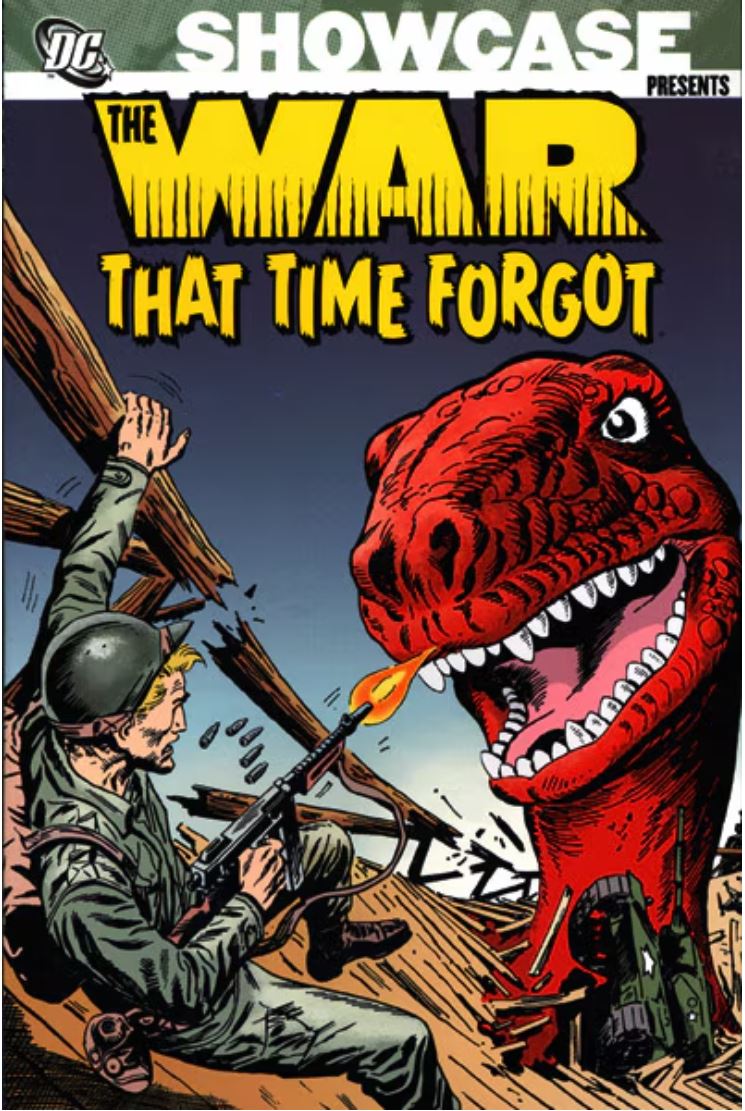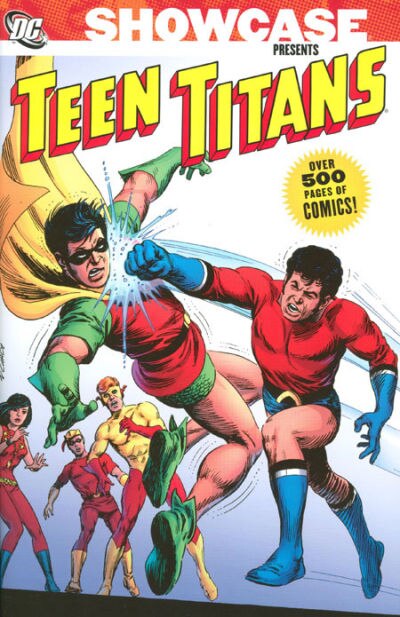
By Jean Van Hamme, Christian Cailleaux & Etienne Shréder after Edgar P. Jacobs: coloured by Bruno Tatti, translated by Jerome Saincantin (Cinebook)
ISBNs: 978-1-80044-095-1 (album PB/Digital edition)
This book includes some Discriminatory Content included for dramatic effect. If any use of such, slurs, epithets, terms or treatments offend you, you really should not be reading this book – or maybe you need it more than most.
Belgian Edgard Félix Pierre Jacobs (1904-1987) is rightly considered one of the founding fathers of the European comics industry. Although his output is relatively meagre when compared to some of his contemporaries, his iconic works formed the basis and backbone of the art form across post-war Europe and far beyond. As a world rebuilt, his splendidly adroit, roguish and impeccably British adventurers Blake and Mortimer – created for the first issue of Le Journal de Tintin in 1946 – became a staple of Continental kids’ life just as Dan Dare did in Britain starting four years later.
Jacobs was born in Brussels, a precocious child who began feverishly drawing from an early age but was even more obsessed with music and the performing arts – especially opera. He attended a commercial school but – having resolved never to work in an office – pursued art and drama following graduation in 1919. A succession of odd jobs at opera-houses (scene-painting, set decoration, acting, singing as an Extra) supplemented his private performance studies. In 1929, Jacobs won a Government award for classical singing, but his dream career as an opera singer was thwarted by the Great Depression, as the arts funding and performances nosedived following the stock market crash.
Picking up whatever stage work was to be had – including singing and performing – Jacobs finally switched streams to commercial illustration in 1940 and found regular employment at magazine Bravo. While illustrating short stories and novels, he famously took over the Flash Gordon syndicated strip after the German occupation authorities banned Alex Raymond’s All-American Hero, leaving the publishers desperately seeking someone to satisfactorily complete the saga.
Jacob’s Stormer Gordon lasted less than a month before being similarly sanctioned by the Nazis, after which Jacobs created his own epic science-fantasy feature – Le Rayon U: a weekly comics milestone in both Belgian comics and the greater annals of science fiction adventure. The Nazis may have banned the strikingly Aryan Flash Gordon but there was no denying public appetite for his kind of action, so Jacobs dipped deep from that established well of romanticism and fantasy as well as borrowing heavily from US movie serial chapterplays.
The U Ray was a huge hit in 1943 and scored big all over again a generation later when Jacobs reformatted the original and traditional “text-block & picture” material to incorporate speech balloons prior to re-running the entire adventure in Le Journal de Tintin in 1973. It was subsequently released as graphic albums beginning in 1974.
Whilst creating U Ray, one of Jacob’s many other jobs was scene-painting, and during the staging of a theatrical version of Tintin and the Cigars of the Pharaoh Hergé and Jacobs met and became friends. If the comics maestro was unaware of Jacob’s comics output before then, he was certainly made aware of it after.
Jacobs started working on Tintin, colouring originally monochrome strips of The Shooting Star from newspaper Le Soir for a forthcoming album collection. By 1944, he was performing similar service for Tintin in the Congo, Tintin in America, King Ottokar’s Sceptre and The Blue Lotus. He also contributed to the illustration of extended epic The Seven Crystal Balls/Prisoners of the Sun. His love of opera made it into the feature as Hergé (who loathed it), teasingly created bombastic Bianca Castafiore as a comedy foil and basing bit players like Jacobini in The Calculus Affair on his long-suffering assistant.
After war and liberation, publisher Raymond Leblanc convinced Hergé, Jacobs and other creatives to work for his new venture. Launching publishing house Le Lombard, Leblanc also started Le Journal de Tintin: an anthology comic edited by Hergé with editions in Belgium, France and Holland starring the intrepid boy reporter plus a host of newer heroes.
Beside Hergé, Jacobs and writer Jacques van Melkebeke, the weekly featured Paul Cuvelier’s Corentin and Jacques Laudy’s The Legend of the Four Aymon Brothers. Laudy had been friends of Jacobs’ since working together on Bravo and was model for some of his characters.
Le secret de l’Espadon (which eventually ran from LJdT #1, 26th September 1946 to 8th September 1949) cemented Jacobs’ status as a star in his own right: offering peril, action and suspense in stunning thrillers blending science fiction, detective mysteries and supernatural mysteries in the universally engaging Ligne Claire style which had done so much to make intrepid boy reporter Tintin a global sensation.
In 1950, with the first 18 pages slightly redrawn, Le secret de l’espladon V1 (The Secret of the Swordfish) became Le Lombard’s first album release, with a concluding volume published three years later. These were reprinted nine more times between 1955 and 1982, with an additional single complete deluxe edition released in 1964. The epic romp featured a distinguished duo of Scientific Adventurers: a bluff, gruff Scots/British scientist and English Military Intelligence officer (closely modelled on his comics colleague Laudy): Professor Philip Mortimer and Captain Francis Blake. They and archfoe Olrik (based on Jacobs himself) were a thematic evolution of characters created for The U Ray…
After decades of old farts like me whining, the lost gem was finally released in English translation in 2023 and followed up at years end by sequel La Flèche Ardente. This latter came courtesy of Jean Van Hamme (Thorgal, XIII, Largo Winch, Blake & Mortimer) & Christian Cailleaux (Tchaï Masala, Gramercy Park, Le troisième thé, Blake & Mortimer), bolstered by colourist Étienne Shréder – and it was worth all that waiting…
Previously in another place and time, the nations of Norlandia and Austradia were at war. The former’s chief scientist Professor Marduk had devised an ultimate weapon capable of ending the conflict but lacked a fuel source to power his “U ray”. He believed mystery element “Uradium” could be found on an unexplored lost continent and headed an expedition to locate and secure samples of the miracle ore.
His prototypical party included assistant Sylvia Hollis, heroic Major Walton and Lord John Calder, Captain Dagon, Sergeant MacDuff and “Asiatic” manservant Adji, spearheading a sturdy crew of true-blue stalwarts. However, their desperate mission to the Black Isles Archipelago was doomed from the start thanks to a spy planted in their ranks…
After many fraught moments and sabotage attempts, the expedition broached the forbidding jungles of a lost world teeming with uncanny primal beasts and savage humanoids, but misfortune, deadly natural hazards and an Austradian assault force reaped a heavy harvest of tragedy as the explorers trekked inland to where Marduk’s researches indicated uradium would be found. Thankfully, Walton was a steadfast counter to danger of every description…
After heartbreaking effort the survivors found a lost civilisation, befriending Prince Nazca and Princess Ica of The Underground City. These highly evolved beneficiaries allowed them samples of magic mineral but then refused to let their “guests” leave… until Walton, the lost world’s overwhelming threats, dire circumstance and the hidden traitor jointly triggered a spectacular reversal of fortune, a lucky escape and ultimate triumph for Norlandia…
Eight decades later the saga resumes with the triumphant survivors and refugee Princess Ica recuperating in their embattled but still free homeland. As Calder romances Sylvia, and learns how her geologist father Kellart Hollis was lost discovering uradium, her boss Marduk finally unlocks its secrets.
In the enemy camp, vile tyrant Emperor Babylos moves to end the current impasse by conquering the lost continent. He is resolved to prevent Norlandia exploiting uradium, even if he has no idea what the element actually does. Despicable Captain Dagon renews his own efforts to destroy the enemies of Austradia after being rescued from a nightmare of primaeval peril by brutal General Robioff when Austradian forces occupy the Black Isles.
Their ultra-modern military ruthlessly ravages the primordial preserve, with monster-animals, beast-men and primitive humans alike falling to lethal ordnance indiscriminately applied. The callous blitzkrieg even precipitates the fall of the hidden city and merciless torture of Prince Nazca for information on the U-force…
The devout ruler and his people worship supreme deity Puncha Taloc and regard “The Stone of Life and Death” as his sacred gift, and Nazca valiantly resists every cruel effort to extract information. All around him his people and world are dying and his strength cannot long resist more torture…
In Norlandia, Adji also warns against exploiting uradium, crying sacrilege and worse, blithely unaware of the terrible fate of the Black Isles. When Marduk reveals a weapon to harness the incredible energies of uradium, the devastating energy of his “ultraphonic” ray rifle horrifies and outrages all who see it demonstrated. Tragically, the secret of his “Fiery Arrow” is already compromised as another traitor seeks to pass it on to Dagon…
Thankfully, Walton and MacDuff are on hand to foil the handover if not capture their slippery foe, and soon after Princess Ica begins playing a role in the heroes’ counterattack…
In the subjugated Underground City, Nazca is saved by a cloaked figure from the past, just as the Black Isles explode in a furious detonation even the civilised, rationalist citizens of Norlandia wonder might be the outraged retribution of Puncha Taloc…
In the aftermath, Austradian dreams are shattered. The story of an earlier mighty race and culture emerges, and the miraculous survival of friends thought lost forever sweetens the victory of the heroes and fall of Emperor Babylos: especially for Sylvia and the man she has secretly loved but never thought she could ever have…

Replete with Old World fun and thrills that cannot be denied or ignored, this album also offers tantalising teasers for the original auteur’s brand and classics: specifically The Time Trap, Professor Sato’s Three Formulae and S.O.S. Meteors plus a bibliography & publishing timeline, should further inducements be needed to catch your eye.
Deceptively simplistic, effortlessly engaging and cunningly customised to merge retro futurist tastes with modern sensibilities, The Fiery Arrow is pure escapist joy to behold, and a book no serious fantasy nostalgic can afford to miss.
Original edition © Editions Blake & Mortimer/Studio Jacobs (Dargaud-Lombard S.A.) 2023. All rights reserved. English translation © 2023 Cinebook Ltd.















